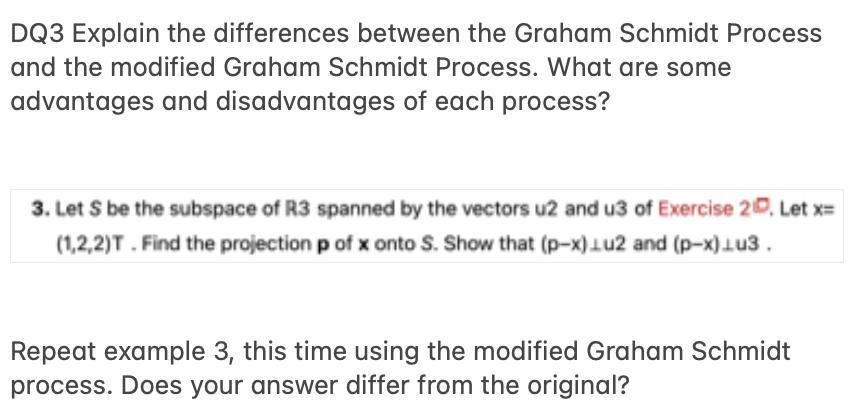Answers
Answer:
The Gram-Schmidt process and the modified Gram-Schmidt process are two numerical methods for computing an orthonormal basis for a given set of vectors. An orthonormal basis is a set of vectors that are mutually orthogonal (perpendicular) and have a length of 1.
The Gram-Schmidt process involves iteratively orthogonalizing the original set of vectors, creating a new orthonormal basis. The modified Gram-Schmidt process is similar, but instead of orthogonalizing each vector with respect to all previous vectors, it orthogonalizes each vector with respect to the immediately preceding vector.
One advantage of the Gram-Schmidt process is that it is straightforward and easy to implement. However, it is prone to numerical instability when dealing with very large or very small vectors, which can lead to significant errors in the resulting orthonormal basis.
The modified Gram-Schmidt process is more stable numerically than the Gram-Schmidt process, making it less prone to errors. Additionally, it can be more efficient computationally. However, it is also more complex to implement than the Gram-Schmidt process, and it can be more difficult to analyze its numerical properties.
In summary, the Gram-Schmidt process is a simple and widely used method for computing an orthonormal basis, but it can suffer from numerical instability. The modified Gram-Schmidt process is a more stable and efficient alternative, but it is also more complex to implement and analyze.
Related Questions
Which interest group is an example of a public interest grOup?
Answers
A public interest organization that promotes individual rights and freedoms, such as civil liberties, racial justice, and equal security under the law, is the American Civil Liberties Union (ACLU).
A group of what kind is an interest organization?Interest organizations are sometimes referred to as pressure or lobby groups because they apply weight to (lobby) political decision-makers. The number of interest groups has risen as New Zealand's population has increased and the country's society has become more diverse.
What other two titles are there for interest groups?Interest groups, also known as special interest groups, advocacy groups, or pressure groups, are associations of people or organizations that are typically officially organized and that try to sway public policy in their direction based on one or more shared concerns.
To know more about ACLU visit:
https://brainly.com/question/11256340
#SPJ9
